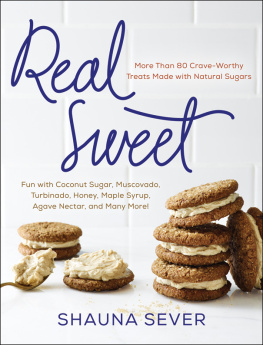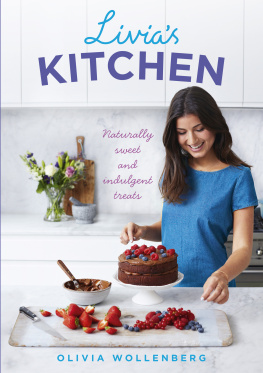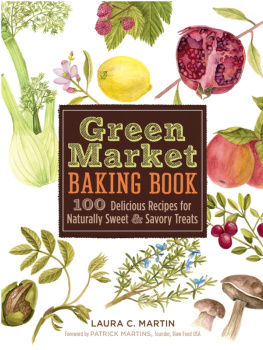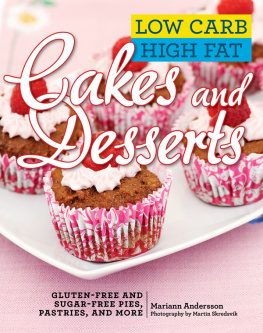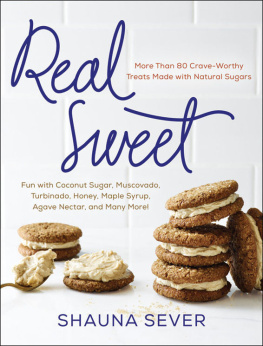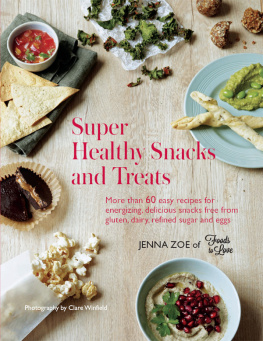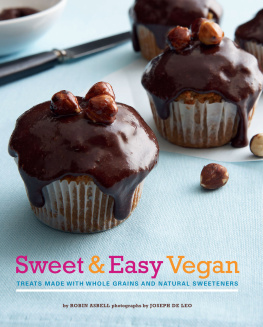For Scott, Caroline, and Andrew,
the sweetest things in my life

Guide

I HAVE A LEGENDARY SWEET TOOTH. In the way that a college kid might brag of his drinking prowess, I can sugar-imbibe you under the table. Brownies for breakfast, lollipops for lunch. Dont even play; Ill take you down.
But as the years go on, and my body chemistry and palate change, and we add more tiny people to our household who become demonically self-propelled in the presence of all things sugary, Ive started rethinking our sweet treats here and there. Not a complete overhaul or eliminationlets not get crazy!but definitely a shift, leaning into a diet heavily influenced by buzzwords like balance and moderation. Snore, right? Wrong! Im in it to win it with a real-world approach to desserts and sweet treats these daystons of flavor, high pleasure factor, just a bit of a rethink in terms of ingredients. And its been blowing my mind, friends.
Heres the thing: while much of my work to this point has been fueled by a steady stream of granulated white sugar (Hi, my name is Shauna and I wrote an entire book on homemade marshmallows), behind the scenes Ive spent countless hours playing around with more natural, unrefined, and less refined sugars. What started as an experiment to introduce a few more nutrients into the treats I keep around the house for my husband and our two little munchkins (and, ahem, myself) quickly became a bit of an obsession. Forget nutrients, man! I became positively starry-eyed at the potential of alternative sugars to add layers of crave-worthy flavor and texture to sweets.
* I swapped in dark muscovado sugar and discovered the Bad Boy of natural sugars. Basically dark brown sugar on steroidsrich, smoky, and heady with molassesit turns out the kind of blondie that bar cookie dreams are made of.
* Turbinado sugar plays the Hero in the natural-sugars pantry; using it instead of white granulated sugar not only gives a flavor boost but also adds a subtle crunch and gorgeous sparkle to streusel toppings, cookies, and quick breads of all sorts.
* Coconut sugar acts as the exotic Femme Fatale in the story of unrefined sugars, accomplishing many of the same results as white sugar in candies while amplifying caramelized flavor with its toasty, almost musky quality (and being a nutrient-rich, low-glycemic sweetener to boot).
* Even white sugar bombs like marshmallows can go au naturel with maple syrup and maple sugar (the Gentle Giants of the natural-sugars kitchen, with their combination of mild sweetness and powerhouse flavor), flipping the script on every campfire smore experience for the rest of your days.
And thats just the beginning. After years of relying on white sugars ability to add sweetness to recipes without interfering with other flavors, I made an exciting discovery: the job of flavor-packed natural sugars isnt just to sweeten, its to totally interfere! Equal parts sweetening power and seasoning! Brainstorm!
Soon I was creating an arsenal of recipeseverything from lower-sugar, good-for-you treats that are perfect for lunch boxes and any day of the week, to twists on bake-sale classics that swap out the usual refined suspects for better sugars, to divinely indulgent desserts that outshine the rest of the menu at the fanciest dinner partybut always with a fun, modern (read: not hippie) vibe. These are real sweets with seriously real ingredients, no doubt about it.
Since well be spending a lot of time together, lets just get one thing clear from the outset: sugar is sugar. Your body will process every sugary calorie in these recipes in more or less the same way. By no means am I touting the recipes here to be health foodthis book is decidedly non-diet-y, which is my top requirement of a good sweet treat. You will never convince me that a brownie made with black beans will make life worth living. But! I do often notice a difference in how I feel when I have a treat with alternative sugars (the burn tends to feel a bit slower, less crazy-making), and I also like the fact that sometimes I can add a nice little nutrient punch along with the sweetness. But above all, its about flavor and satisfaction. And were going to get there with better, higher-quality ingredients, better sugars, and better techniques that work in the home kitchen.
So thats what Im going to share with you in these pagesa collection of my favorite sweet treats that use the kind of flavorful, natural, less processed sugars and sweeteners that have their place in a balanced life. To me, this is truly baking, and eating, in moderation. Prime your sweet teeth, friendswere goin in.
I know what some of you might be thinkingDo I have to buy all these sugars to use this book?and the answer is no! Of course, using the ingredients as listed is the best route, but as long as you swap dry sugars for other dry sugars and liquids for liquids, experimenting is encouraged (see and the sugar profiles peppered throughout the book for tips on the best applications for each). And although youll have some loss of flavor and color, you can even use conventional supermarket sugars in equal measure for dry natural ones in most cases: white granulated 100 percent cane sugar in place of turbinado sugar, coconut sugar, maple sugar, rapadura, and evaporated cane juice; dark brown 100 percent cane sugar for light or dark muscovado.

Since entering the world of baking and treat making with natural, unrefined, and less refined sugars, Ive tried just about every sticky, sweet ingredient thats out there. In the world of natural sugars, generally the darker the sugar, the less processed and more nutrient dense it is and the bolder flavor it will have. Theres a veritable rainbow of natural sugars available (albeit a sort of brown rainbow), both from sugarcane and non-sugarcane sources, and well use a wide variety of them in these pages.
Throughout the book, youll find special profiles of seven different natural sugars, with more detailed information on what makes each one unique and the best ways to use them. But there are a handful of other natural sugars that I love to keep on hand, too. Here are my sweet essentials.
Granulated Sugars Derived from Sugarcane
Using refined white granulated sugar as our baseline (see for more on the cane sugar production process), lets move through an arsenal of dry cane sugars, going from most to least refined.
Organic evaporated cane juice. Just a few steps less refined, evaporated cane juice is basically white sugar without the final chemical treating, bleaching, and polishing process. So what you get is a slightly coarser, sparkly, blond-hued sugar that has a hint of moisture to it. Its a good starter ingredient for leaning into using less processed sugars in your recipes, as it doesnt mess with the chemistry or texture of your favorite recipes that call for white granulated sugar. It has a really subtle but lovely flavor, almost like a hint of vanilla.
You wont find a ton of recipes in this book that use evaporated cane juice because it falls on the more refined, less flavorful end of the sugar spectrum, but its a handy, versatile sugar to have available. Most sugars labeled organic sugar are evaporated cane juice, and you can sometimes also find it called natural cane sugarjust check the label. Theres more to be learned about evaporated cane juice and how to use it in

